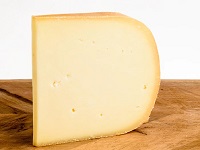Molinara (Italy)
Molinara is a red grape from Verona.
It is a blending grape in Valpolicella, Bardolino and Amarone blends.
Molinara Flavors
Wild berries and saltiness are typical aromas for Molinara grapes.
Red Cherry |
Black Cherry |
Strawberry |
Blackberry |
Flowers |
Pepper |
Almonds |
Salt |
Molinara Profile
Molinara wines tends to be:
| SUGAR: | Dry (3 g/l) |
| BODY: | Light |
| TANNINS: | Light |
| FRUIT: | Medium |
| ACIDITY: | Light |
| ALCOHOL: | 13% ABV |
|
Serving Temerature: 14-15°C (57-59°F) | |
Molinara Food Pairing
Molinara is very food friendly. It pairs well with many types of food. Its fruitiness is perfect with Grilled Food.
Antipasti |
Vegetables |
Ham |
Salami |
Pizza |
Pasta |
Risotto |
Soups |
Hamburger |
Chicken |
Lamb |
Veal |
Excellent Pairings
Italian. Venetian Cuisine.
Antipasti. Ham. Salami. Lardo di Colonnata.
Grilled Vegetables. Spicy , Rich Soups.
Pizza. Pasta. Risotto. Porcini Mushroom Risotto.
Fat Fish. Bacalao. Salmon. Tuna.
Grilled or Roasted Meat. Fowl. Game.
Stews. Braised Lamb. Glazed Pork.
BBQ. Hamburger. Steak. Mix Grill.
Cheeses
Mild Aged Cheese. Asiago. Montasio. Piave.
Veneto Specialities
Veneto Antipasti.
Treviso’s Radicchio Risotto.
Polenta Dishes.
Fresh Pasta with Duck Sauce.
The Ideal Glass for Molinara
The Burgundy Glass is for swirling & releasing the wine aromas.

|
The shape of the glass captures and directs the delicate aromas to your nose
and leads the wine to the tip of your tongue for a better reception of the tastes.
The Burgundy glass was designed for the delicate and aromatic red wine Bourgogne Rouge, made from Pinot Noir grapes in Bougogne (Burgundy). |
Molinara Cheese Pairing
If You Like Molinara
You Will Also Like:
Corvina, Rondinella and Molinara Blends
Many wines from the Veneto Region in Italy are blends of Corvina, Rondinella and Molinara.
Amarone
Corvina is the most important grape for Amarone and it is blended with Rondinella, and Molinara.
Corvina grape has a dark color and gives body and structure.
Valpolicella
The Valpolicella blend consists of minimum 45% Corvina.
Molinara is used to add acidity and Rondinella for the high sugar.
Ripasso
Ripasso is made blending Valpolicella and Amarone wines.
Recioto
Recioto is also a blend, but the Rondinella grape is preferred due to the high sugar concentration.
Bardolino
Bardolino contains less Corvina and more Rondinella and Molinara, resulting in a lighter wine.
Region Veneto
The most famous white wines from the region are Soave and the sparkling Prosecco.
The most famous red wines are Amarone and Valpolicella from the Valpolicella Wine Region.
Black Grapes |
White Grapes |

11% Corvina |

27% Glera |

Veneto is home to some incredible DOCG wine regions:
- Amarone della Valpolicella DOCG
- Asolo Prosecco DOCG
- Bagnoli Friularo DOCG
- Bardolino Superiore DOCG
- Colli di Conegliano DOCG
- Colli Euganei Fior d’Arancio
- Conegliano-Valdobbiadene Prosecco DOCG
- Lison DOCG
- Montello Rosso DOCG
- Piave Malanotte DOCG
- Recioto della Valpolicella DOCG
- Recioto di Gambellara DOCG
- Recioto di Soave DOCG
- Soave Superiore DOCG
Soil |
Climate |

Calcareous. |

Mild Continental |












